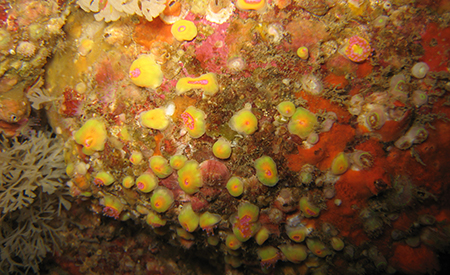/FEM/ABIOP
Type of resources
Available actions
Topics
Keywords
Contact for the resource
Provided by
Formats
status
-

Backup of the data used for characterising the different biofouling monitoring protocols in an excel file.
-

Excel database containing the information collected for the atlas (45 sources for the French maritime façades + 24 on a global scale) and shapefiles for the cartographic representation of the available data
-

Proposal of protocols for measuring several biofouling variables (fresh weight in air, fresh weight in water, biovolume, thickness) that were tested during the project.
-

The macrofouling qualification and quantification protocols were extracted from 64 public documents (33 scientific articles, 1 book chapter, 22 internal reports, 4 internship reports and 4 theses) presenting studies conducted in France (n = 40), Europe (n = 16) and the world (n = 8).
-

The main objective of this atlas is to summarise the knowledge acquired on biofouling, and more generally on communities of living organisms on hard substrates, available today in mainland France and the French overseas territories, in order to anticipate the issues that this phenomenon will pose in an ORE context. The atlas is based on the most exhaustive bibliographical analysis possible, including A-level scientific articles, reports (training courses, monitoring, studies), and works presenting the results of studies conducted in French waters
-

During the ABIOP project launch meeting, the consortium agreed to add a task to the project aimed at identifying the challenges of biocolonisation in an ORE context. This additional work is indeed necessary because it allows the organisation, updating and presentation of the reflections undertaken by biofouling experts from various industrial and research entities and federated by FEM, for several years on this topic.
 Catalogue PIGMA
Catalogue PIGMA